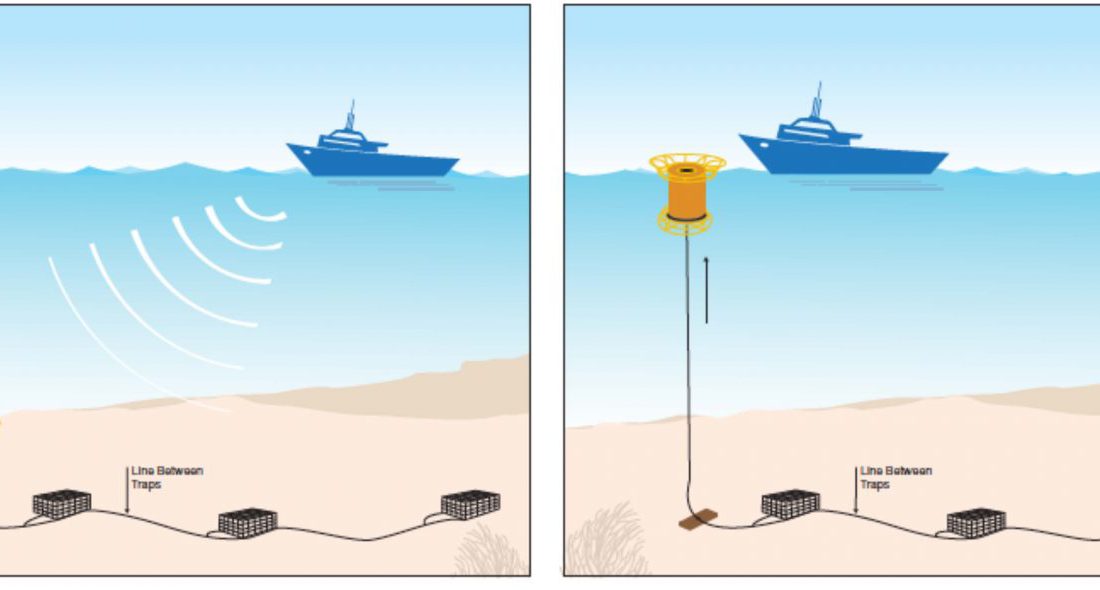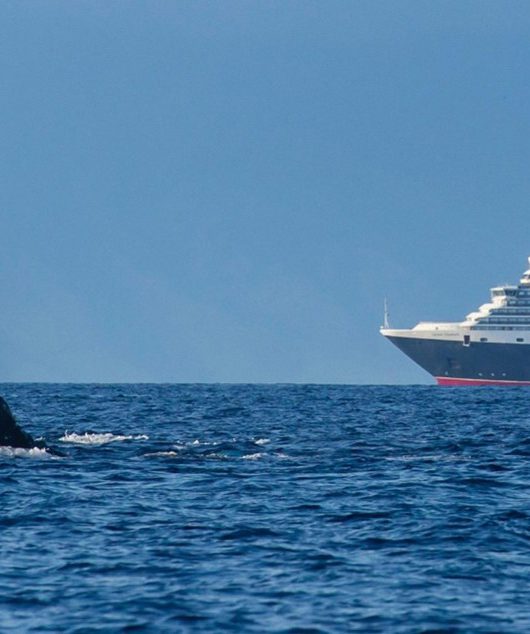Could ropeless fishing gear allow fishing to continue without entangling marine wildlife?
As the mortality crisis for the North Atlantic Right Whale continues, researchers from the Marine Team at the Canadian Wildlife Federation are collaborating with fish harvesters to test new technologies that may allow fishing to continue while preventing entanglements in fishing gear.
Ropeless fishing gear is gear without any vertical lines left in the water column — from the water’s surface to the sediment — when the harvester is not present.
Ropeless systems have been tested successfully on a small scale — some are even widely used in other applications, such as oceanographic research. However, few trials have been conducted in Canadian commercial fisheries.
Our goal is to put ropeless fishing gear into the hands of fish harvesters so they can test it on the water, under the harsh marine conditions they encounter on a daily basis.

Types of Traps
CWF and our collaborators are testing two main types of systems:
1. Contained Endline Trap
In the first type, lines and buoys are held in a containment system (such as a mesh bag or trap) at the bottom of the ocean until they are released via an acoustic trigger when the harvester comes to retrieve the catch.
2. Inflatable Sac Trap
The second type includes a deflated bag attached to the trap that inflates when triggered, raising the trap to the surface.
Both of these systems, if successful, could significantly reduce the risk to marine mammals by removing the vertical lines that entangle them from the water column.
Testing, Testing
Some aspects of ropeless gear that need to be tested include:
- Success rate of retrieval
- Time needed to operate
- How to locate the gear when there is nothing marking it on the ocean surface
Is Ropeless Gear a Feasible Alternative?

The goal of these trials is to discover whether ropeless gear could be a feasible alternative to traditional fishing gear in areas with a North Atlantic Right Whale presence.
Areas in the Gulf of St. Lawrence with a North Atlantic Right Whale presence are susceptible to being closed to fisheries. It is our hope that ropeless gear would allow fish harvesters to continue working in these closed areas, rather than displacing fisheries.
Working with fish harvesters is our best chance to determine the potential these systems have to work for commercial fisheries in Atlantic Canada.




3 comments
we can supply the low cost acoustic release that the fisherman can afford
I’m curious to know how the “whale lines” are making out? To explain myself it has been implemented in my home town (lobster fishing community) that weak parts in the trawl where to be included. I’m not trying to start any controversy but what about ship traffic?
Thanks for the question! Yes, weak gear components will be required for all fixed-gear fisheries in Atlantic Canada by 2023. Many of these types of gear are still in the testing phase, and we are actively working with fish harvesters on this testing to help advise Fisheries and Oceans Canada on what solutions will or will not be suitable for individual fisheries and fishing areas throughout the Maritimes.
CWF is also involved in advocating for shipping management measures that will further reduce the threat of ship-strike to marine mammals. The Government of Canada has already implemented several measures that are helping to reduce this threat, but more needs to be done.